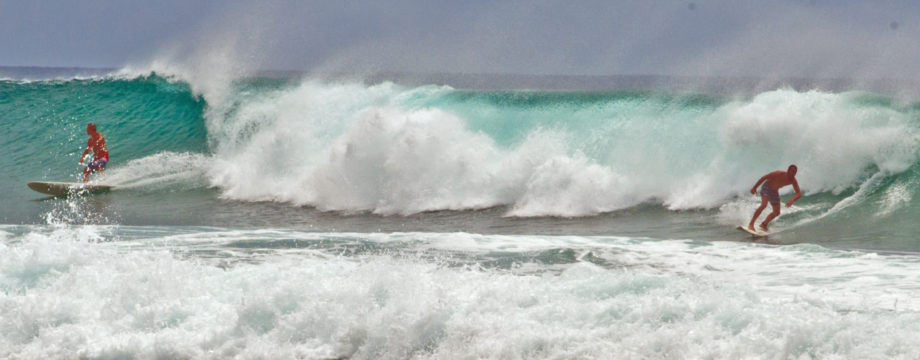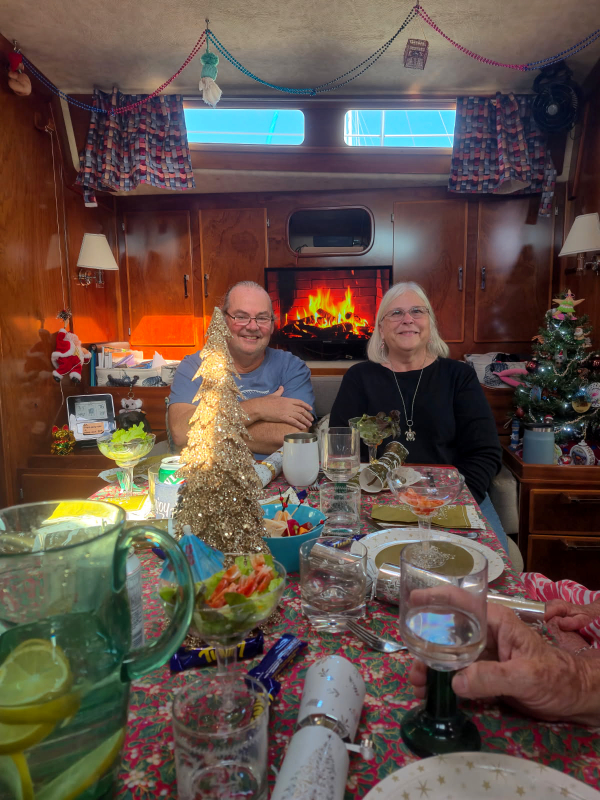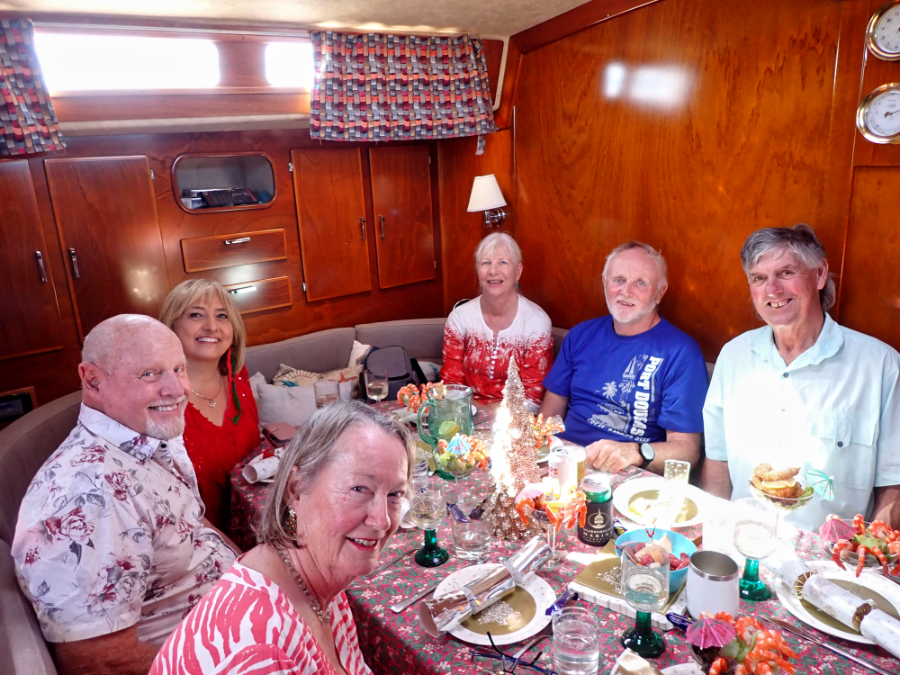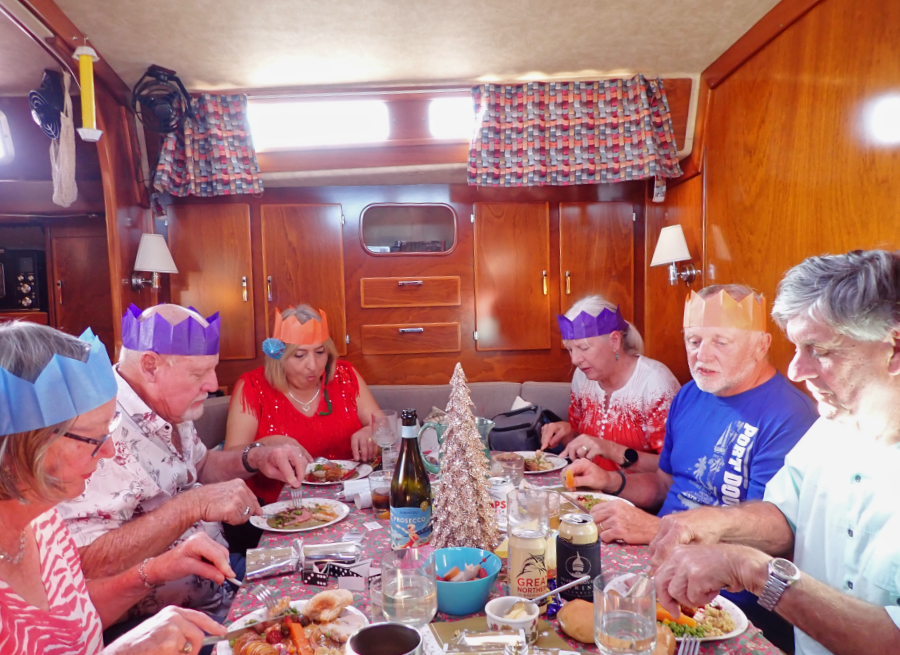When most of the world thinks of Christmas, they picture frosty mornings, breath hanging in the air, and the smell of something roasting in the oven. But here in Australia, where we’re currently moored, December 25 is more likely to involve sunscreen, a wide-brim hat, and the sound of waves rather than sleigh bells. The beach is the top destination here at Christmas. That’s where Christmas in July comes into play. It is the Southern Hemisphere’s chance to flip the script and enjoy a traditional, cold-weather holiday in the middle of their own winter.
And here’s the kicker: most of the planet’s population never has this problem. About 90% of the world’s people live in the Northern Hemisphere, where Christmas naturally lands in the cold months. Only about 10% live in the Southern Hemisphere, which includes Australia, New Zealand, most of South America, and a scattering of islands. That means people here grow up thinking, “Why on earth do all the Christmas cards have snow?” while sweating through another barbecue lunch.
Why July? Back home, I’ve never had to question why Christmas menus are heavy on roasts and puddings; they match the weather. Here in Australia, December’s heat makes that same menu feel more like a dare than a celebration. Ever tried tucking into roast turkey and hot pudding when it’s 38°C (100°F) outside? It’s a commitment. In July, though, the weather finally matches the mood with cool evenings, crisp mornings, and the excuse to light a fire. Suddenly, the menu and a big meal make sense.
The idea of Christmas in July in Australia isn’t new. Historians trace similar suggestions back almost 200 years, with colonial diaries hinting that the heavy “eating and drinking” might be more enjoyable in winter. I recently learned that towns in the southern part of Australia host full Yulefest events, with carols and decorated trees. A few of these areas might actually see snow in July.
So, how do Australians celebrate? Well, one word pretty much sums it up: beer. Just kidding — well, sort of kidding. Aussies do love their beer. But there’s more to it. The July version is all about the winter comforts their December Christmas can’t deliver: fireside dinners, markets selling hot drinks and handmade gifts, and enough knitwear to make you wonder if sheep are in on the profit margins. In the southern areas of Australia, where it might actually be frosty, people travel to lodges and B&Bs that go all-in with decorations, carols, and the smell of cinnamon drifting down the hall. It’s the same holiday spirit — just at the right temperature.
Our first experience of Christmas in July was in the best possible way: through friends we’ve made here. We’ve met some wonderful people in Australia, the kind you click with instantly. They’ve made sure we’re included and have shared all sorts of tips on places to visit. They invited us to join their Christmas in July celebrations, and we jumped at the chance. Then came the twist: once we said yes, they suggested we host it, since our boat has the largest table (Amels come with extensions). We ended up with eight people for dinner.
The day before, we pulled out our Christmas bling, put up our tree, and hung our decorations. I loaded my Christmas list from iTunes for background music. Aussies, including our friends, love to pull one over. Telling tourists about drop bears is a great example. Cindy said, This better not be a prank. At this point, we were pretty sure it wasn’t, as we’d seen celebrations in the local town.
Dinner was the full works — prawn cocktails, roast turkey, ham, potatoes, rich gravy, sprouts, carrots, and traditional Christmas pudding with custard. We even had Christmas crackers (a British tradition). One of our friends had planned it all and bought the crackers last December and stowed them on their boat for the July celebration. Every couple made a dish and it all came together in our galley. We had soooo much food. Everybody overdelivered. And of course, the bubbly flowed freely all afternoon.
It was such a simple suggestion, but it said everything about the friendships we’ve made here. These aren’t just acquaintances; they’re the sort of friends who want to fold us into their traditions. That night, I realized Christmas in July isn’t just about weather or food — it’s about community.
Because the Southern Hemisphere is such a small slice of the global population, Christmas in July has a certain rebellious streak. People here aren’t “pretending” it’s Christmas, they’re reclaiming it for their own climate. It’s a reminder that traditions are flexible. You can move them, reshape them, and still keep the magic intact. I should mention there’s no religious element, no sermons, no nativity plays. Nor is there gift-giving, other than the gift of friendship.
In fact, the magic might be stronger for it. July Christmas feels slower, calmer. There’s no rush to get school holidays started, no end-of-year fatigue, no last-minute shopping in a heatwave. It’s just a group of people choosing to make something special together. And oh, what fun it was to ride on this special day. Oh, I should mention at this point, there is no set day. It can be any day in July that you choose. So, if you live here, you might have more than one Christmas. How great is that?
Here’s a thought that hit me during the celebration: when Northern Hemisphere folks see snow on Christmas cards, it’s accurate. In much of the Southern Hemisphere, it’s just a postcard fantasy. The same is true for tropical islands — in many countries we’ve visited, most people have never seen snow. Most houses don’t have chimneys. When Santa arrives, he has to commit B&E. For people to experience the Hollywood Christmas, they need to move well north of the equator.
As with all holidays, it’s not about where you are or the toys you receive — it’s about who you’re with, and how you make each other feel.
Happy Christmas.





